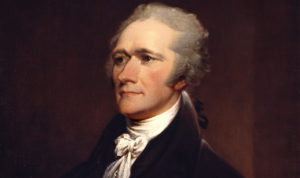Wolfgang Amadeus Mozart, born this day in 1756, was not only a musical genius and prolific composer; he also founded or revolutionized several genres of music. Here is an indication of his accomplishments in some key areas.
- Symphony: Before Mozart, a symphony was little more than a warm-up piece, on a par with an overture or a suite. Mozart’s forty-one symphonies were major and complex works, covering the spectrum of human emotion. The dark and dynamic Symphony No. 40 is among several of his works that anticipate the 19th century romantic movement. The finale of his final symphony, Jupiter, oscillates between conflicting themes, using lyrical woodwinds and stormy orchestration, and ending with a triumphant resolution.
- Piano Concerto: Mozart transformed the piano into the centerpiece instrument of orchestra. Prior to this transformation, the clavichord or harpsichord was central, each of which was severely limited in its ability to repeat or sustain notes. By moving the piano to the center, Mozart allowed room for flamboyance, but he never engaged in it at the expense of harmony with the orchestra. He wrote twenty-five piano concertos. His Piano Concerto No. 20 delivers great depth of expression as it alternates from furious sections involving the full orchestra to bright and happy melodies by the woodwinds, before concluding with a jubilant piano solo. The Elvira Madigan theme is a delicate ode to love.
- Opera: Mozart placed harmony, melody, and counterpoint in the center of opera, driving forward the respective plot. In Mozart's time, opera was the most complex musical genre, combining all of the major branches of the performing arts. Mozart skillfully integrates voice, movement, dramatic expression, and musicality into a beautiful and communicative whole. In The Marriage of Figaro, multiple conversations crisscross but never clash, articulating several different points of view simultaneously. The Magic Flute at once captures the music of a songbird and dramatizes the story of man’s education, which progresses through trial and error, from chaos and superstition to order and understanding. In this sense, Mozart provided the soundtrack for the Age of Enlightenment.
- Other genres: Mozart wrote eighty-four sonatas, fifty-four works of chamber music, and seventy-six sacred works—including Requiem in D Minor (which he was composing when he died). His German dances were the precursor to the Vienna Waltz. The rich sonority of his Serenade No. 10 is featured in the highly entertaining (albeit historically inaccurate) film Amadeus. Perhaps Mozart’s most famous work is his Serenade No.13, also known as A Little Night Music. In this serenade, with only four instrument sections, strings alternately race with great aggression and precision, then slow into subtle warmth and tenderness.
Queue up some Mozart on this master’s birthday, and enjoy the beauty he bestowed on the world.
https://www.youtube.com/watch?v=yM8CFR01KwQ
Related:
- Getting More Enjoyment from Art You Love
- Interview with Jeff Britting on Ayn Rand’s Anthem Off-Broadway
You might also like
Portable Ultrasound: “The Stethoscope of the 21st Century”Fracking Fuels Post-2008 U.S. Industrial Recovery; Regulation Strangles EU Competitors
Return to Top















